I have been astounded by two spectacular flower displays resulting from autumn fire management burns.
There are scores of Grasstrees, Xanthorrhoea, spikes in one main area, at O’Donohue’s reserve in Anglesea, and also along much of the first part of Ted’s Track in Aireys Inlet.
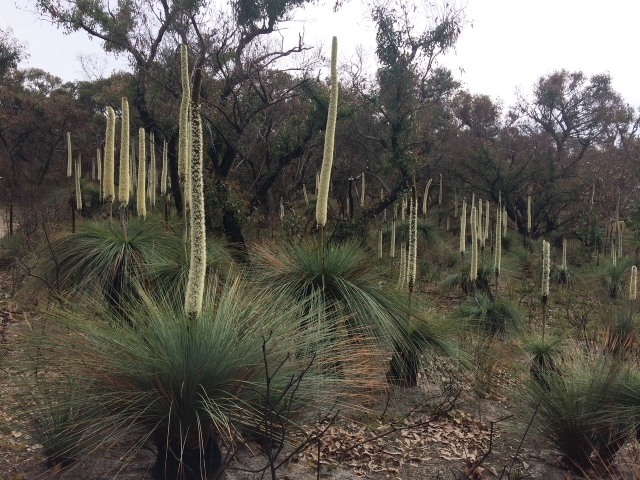 Grasstrees
Grasstrees
I recently heard of a study done of one spike, in which 134 insect species were identified. These tall erect, creamy-white spikes, some twisting in amazing shapes, are covered in creamy-white flowers.
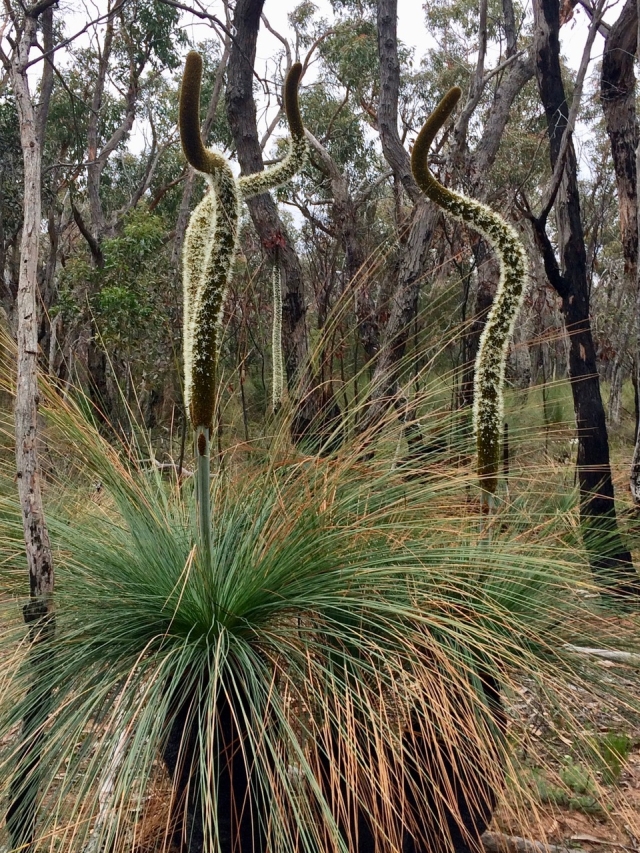
At Ted’s Track there is a marked contrast between these pale spikes and the blackened tree trunks and branches, as it has clearly been a much hotter burn. These burnt trees are regenerating with epicormic growth of new leaves along the branches.
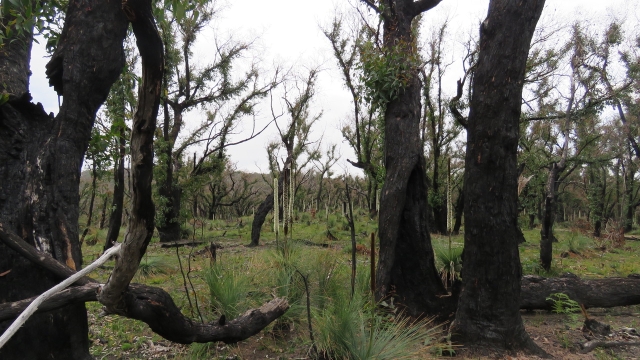 Grasstree spikes at Ted’s track
Grasstree spikes at Ted’s track
Many small plants have burst into bloom after the burn. My favourite is the glorious cornflower-blue domed head of the Blue Pincushion, Brunonia australis; the pincushion effect made by the protruding pale or yellow styles. At Ted’s Track they are spread right along the track, but at O’Donohue’s they are mostly in a few areas.
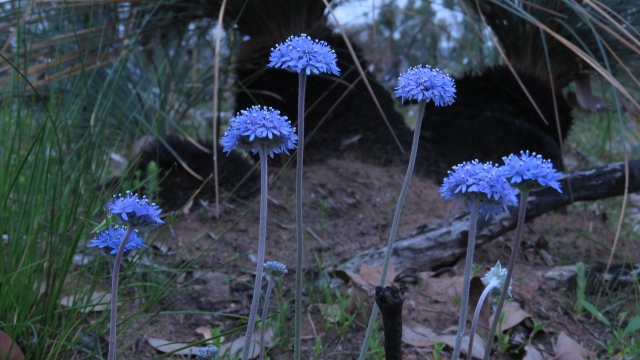
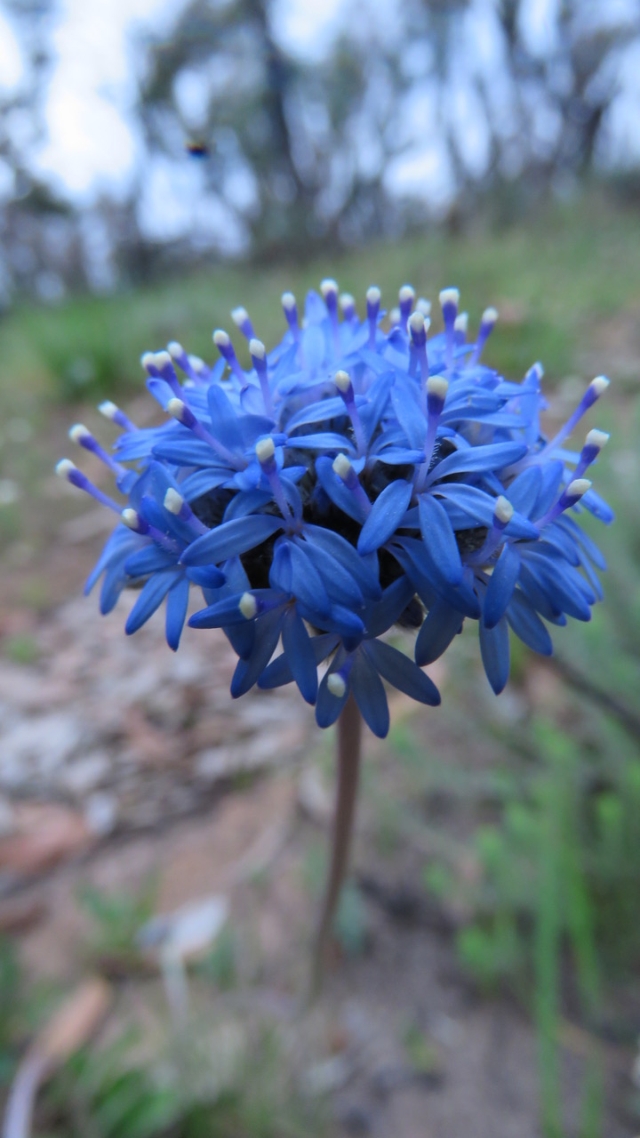
Blue Pincushion
Another widespread blue plant is the Bluebell, Wahlenbergia, swaying appealingly on its long thin stem. We have seven species, but the Tall W. Stricta subsp. stricta is the most widespread.
 Tall Bluebell
Tall Bluebell
There were some other plants which usually only appear after fire. I was on the lookout for Tufted Lobelia, Lobelia rhombifolia, with its distinctive, five-petaled rich dark-blue flowers. However, the ones I have found were very small and not so easy to see, but well worth the look.
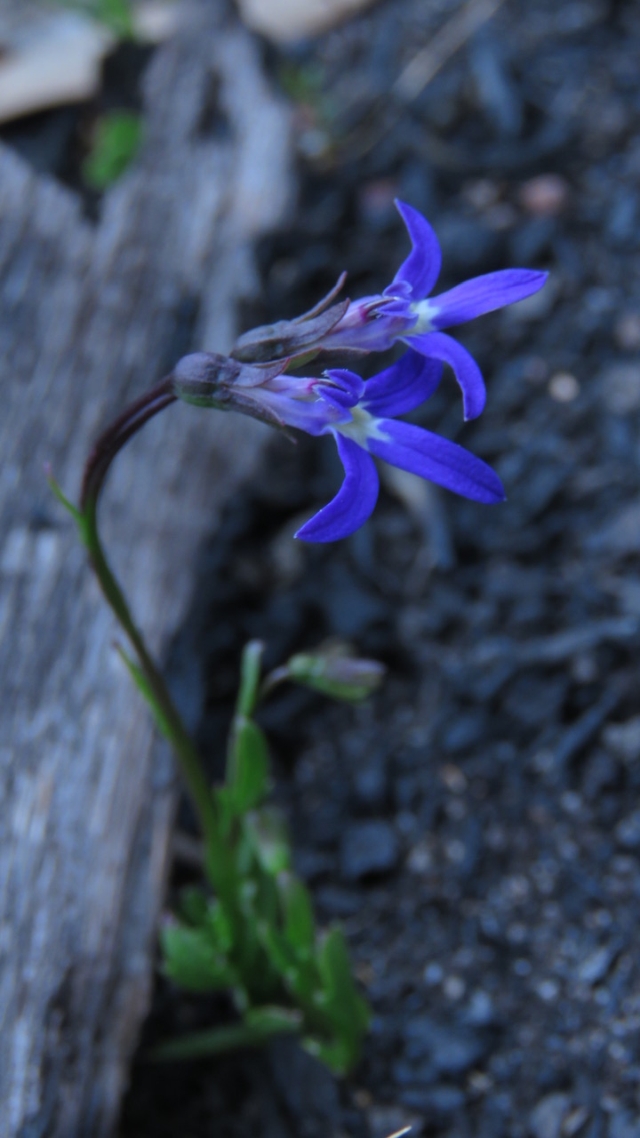 Tufted Lobelia
Tufted Lobelia
In Anglesea there is also the uncommon plant Kopata, Pelargonium inodorum, which I don’t remember having seen before. However, it looks very similar to the common, and more robust, Austral Stork’s-bill, P. australe, which is putting on a display at Allen Noble Sanctuary with its clusters of pink flowers with red markings. The smaller leaves of Kopata seem to be the most obvious difference.
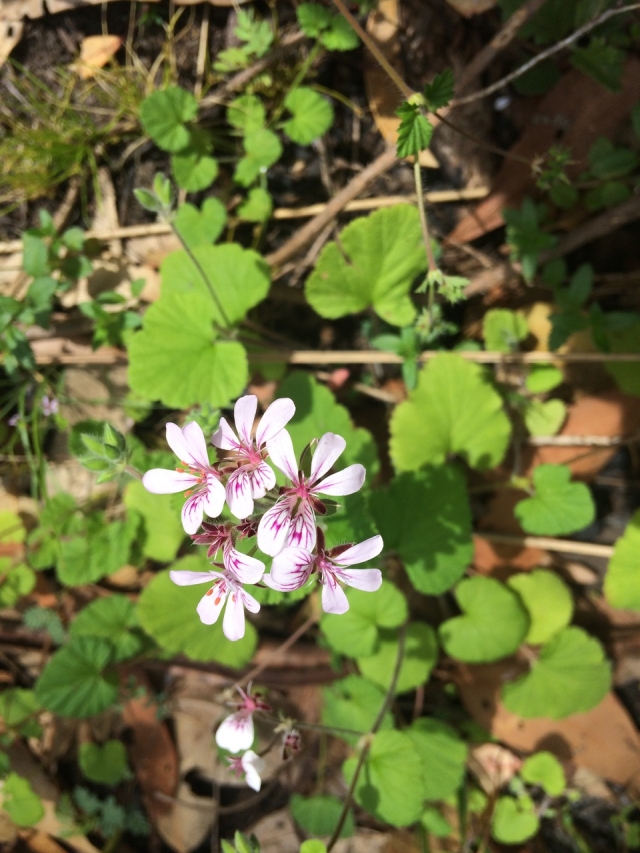 Kopata
Kopata
On a side track down the hill from Ted’s Track I was really pleased to find several excellent specimens of Holly Lomatia, Lomatia ilicifolia, with racemes of striking creamy-white white flower, as it also only flowers after fire.

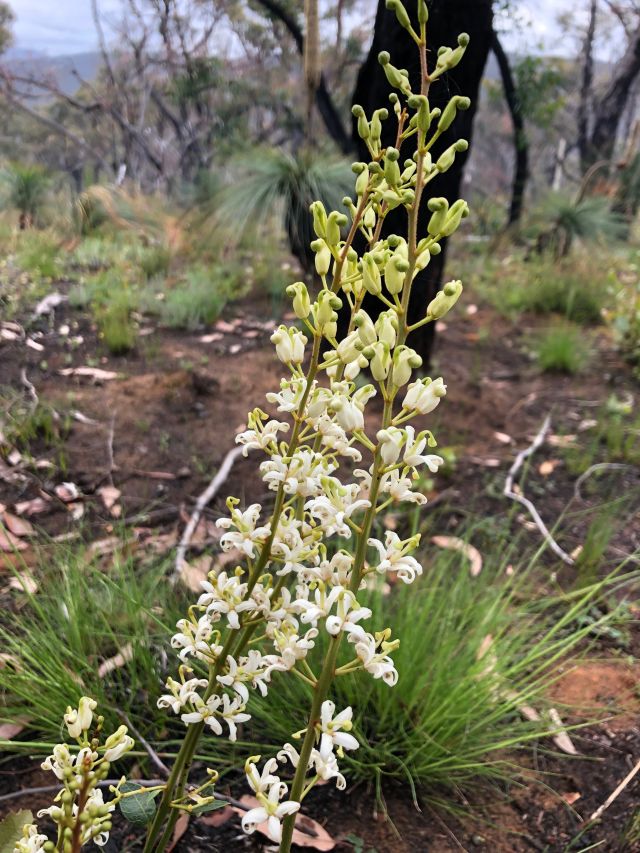
Holly Lomatia
At O’Donohues there is one small bush of Grey Everlasting, Ozothamnus obcordatus, growing half way up the central pathway. I recently saw many in the drier countryside of central Victoria near Beauford and Newstead. The dense clusters of small bright yellow flowers stand out in the shiny dark green foliage of small rounded leaves. It was only in turning over the flowers and leaves that I understood why it is called Grey!
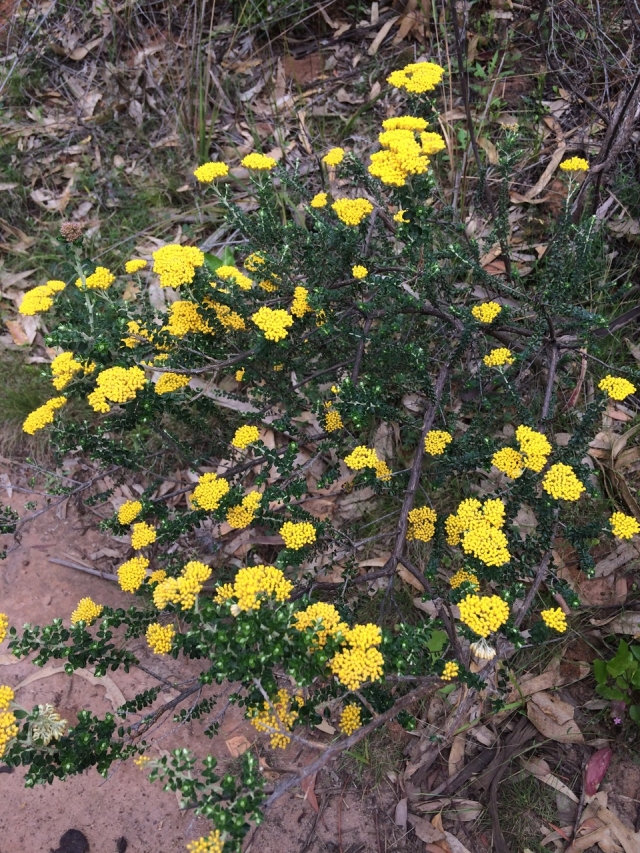
 Grey Everlasting
Grey Everlasting
Bent Goodenia, Goodenia geniculata, with its irregular five-petalled yellow flowers, is standing out in the open vegetation and blackened soil.
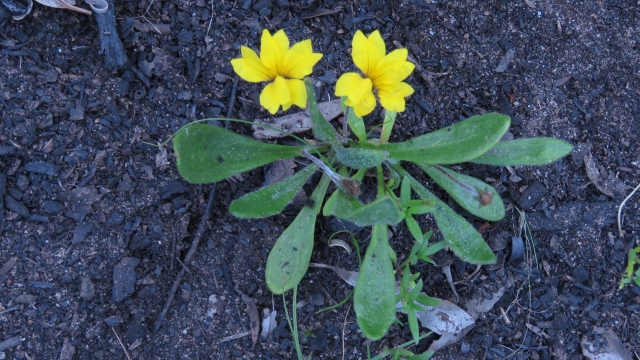 Bent Goodenia
Bent Goodenia
There is also the most low-growing of our Rice-flowers, the Common Rice-flower, Pimelia humilis, with its clusters of creamy white flowers.

Common Rice-flower
Milkmaids, Burchardia umbellata, is another plant in quite large numbers with its attractive clusters of white sweetly scented flowers, many with the pink three-chambered capsules developing.
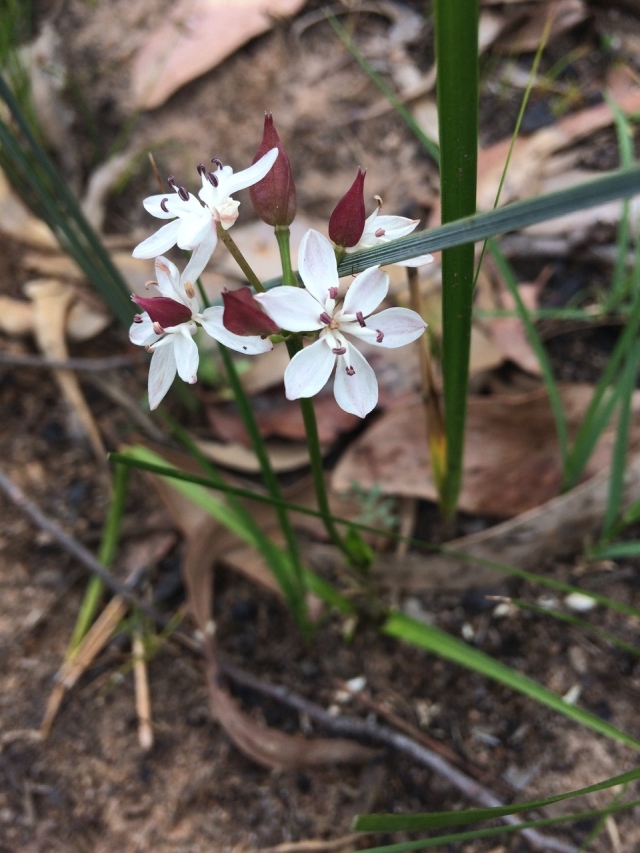 Milmaids
Milmaids
All over our district, Prickly tea tree, Leptospermum continentale, is a great sight as it is covered with small white flowers. But be careful just to look, don’t touch!
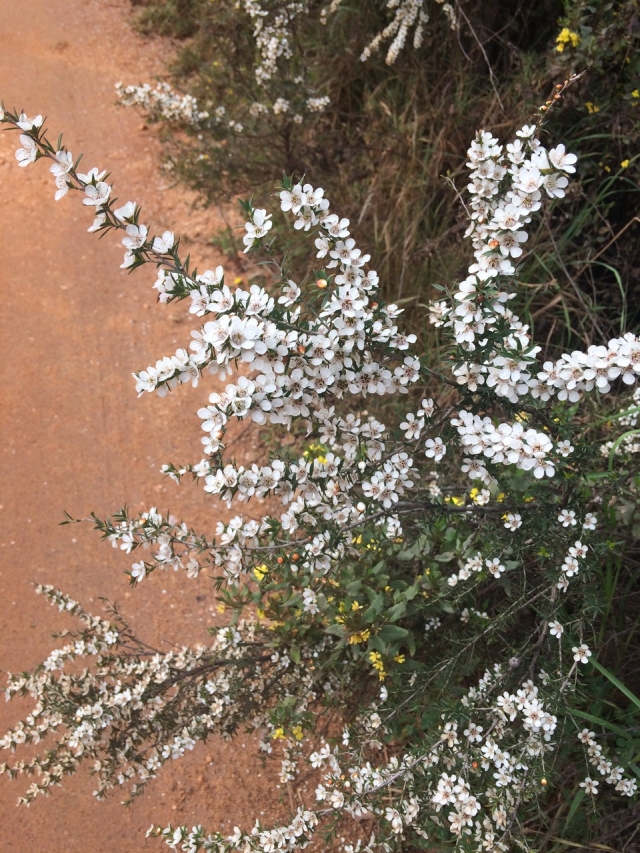 Prickly tea tree
Prickly tea tree
Finally, be on the lookout for Black Wattle, Acacia mearnsii, as this large spreading tree is the last of our wattles to flower. It is one of the few to have true feathery leaves, like Silver Wattle, but the leaves are greener. I always check out the leaves to see how the raised glands are placed along the midrib. In Black Wattle they are scattered irregularly, in contrast to Silver Wattle, where they are placed at the base of each pair of leaflets.
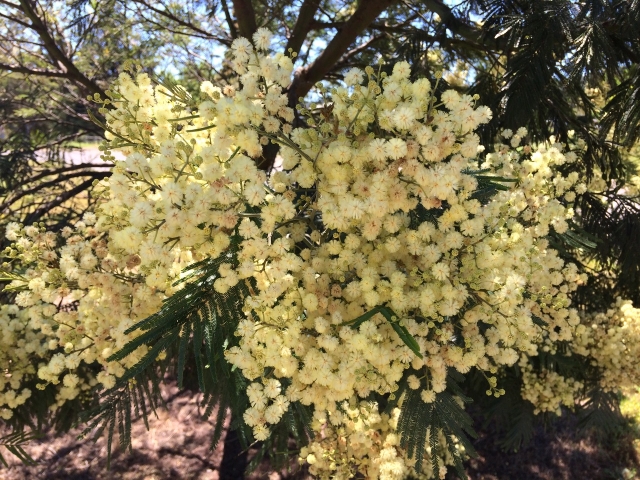
Black Wattle
Let’s hope the display continues over the summer, and remember to carry your copy of Flowers of Anglesea and Aireys Inlet.
Ellinor Campbell